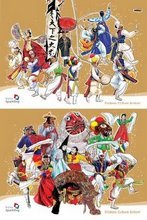India is the guest country at the Korea International Art Fair 2009 (KIAF) that begins today in Seoul. KIAF director Cheong Jong-Hyo
, who is also a known expert on the Korean art market and ran his own gallery in Osaka, spoke with Romain Maitra : What do you wish to achieve from this year's KIAF? Due to the economic downturn, almost every art fair is suffering from poor participation and disappointing sales. South Korea's recovery rate has been faster than that of other countries. From this positive aspect, the Korean art market is looking bright and our so-called 'young' (economically active age group between 30 and 40) collectors' consistent passion for art is one of the merits of the Korean art market. The Korean government is supporting us actively in order to achieve quick recovery from recession. So the main objective of this year's fair is to revitalise the Korean art scene and also become a role model that brings positive effects to neighbouring art markets like in India. What are your objectives to have India as the guest country this year? Contemporary Chinese art has drawn significant attention from the international art world in the past few years. So there is more interest in Asian art as compared with western art. Many experts share the opinion that India will rise as a new centre of art and culture in Asia. India has a potentially huge market besides its culture and history. Public interest in Indian art is gradually increasing in Korea. Hence the KIAF decided to invite India as the guest country and organise a special exhibition of artists who are representative of contemporary Indian art. The prime reason for having India as a guest country was to introduce and emphasise contemporary Indian art and its effect on the current international art scene. What is the status, or position, of contemporary Indian art today in the Asian art market? I agree with the opinion that the 21st century is more about the East than the West in almost every aspect, including art. Lots of Indian artists are already enjoying huge popularity around the world. But at this stage, it's about time art institutions in India the government, galleries, museums and individual curators became proactive and enlarged their market. This year India has been appointed as a guest country in ARCO in Spain and KIAF in Korea but the low interest of local institutions has resulted in poor participation in both the fairs. In my opinion, art associates in India should grab such opportunities. Long-term strategy is likely to determine the state of Indian art in the global market in the next 10 years.
Subscribe to:
Post Comments (Atom)





No comments:
Post a Comment